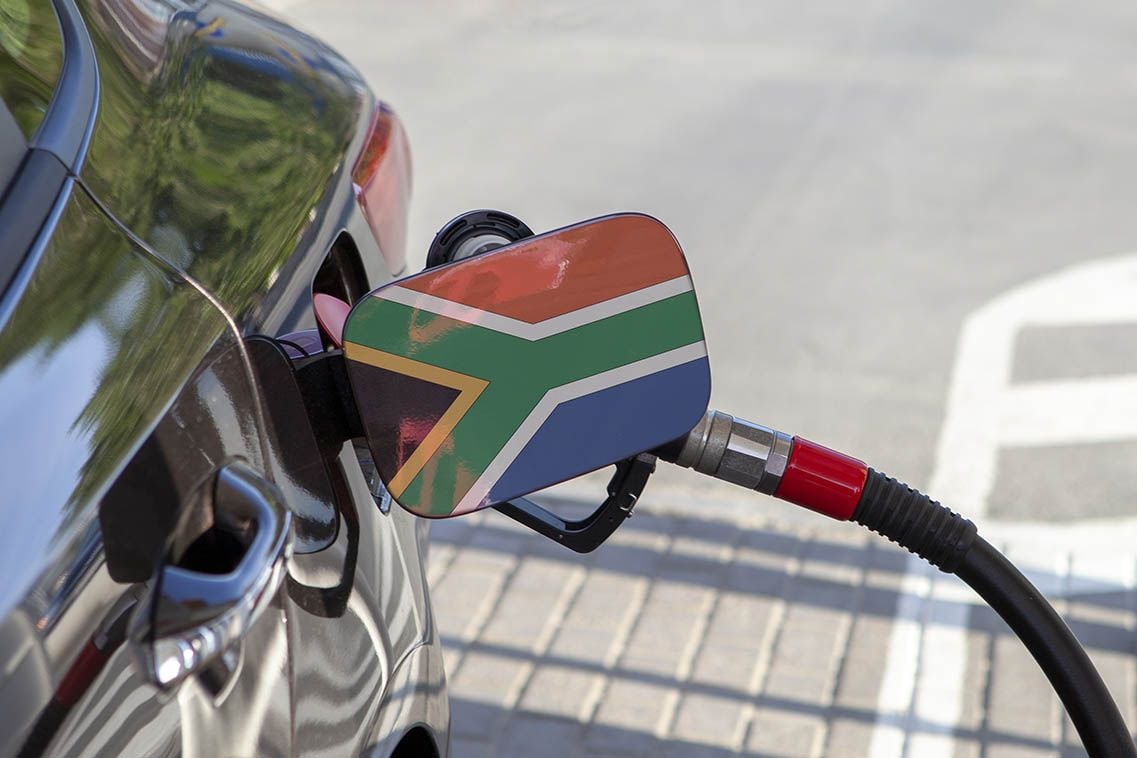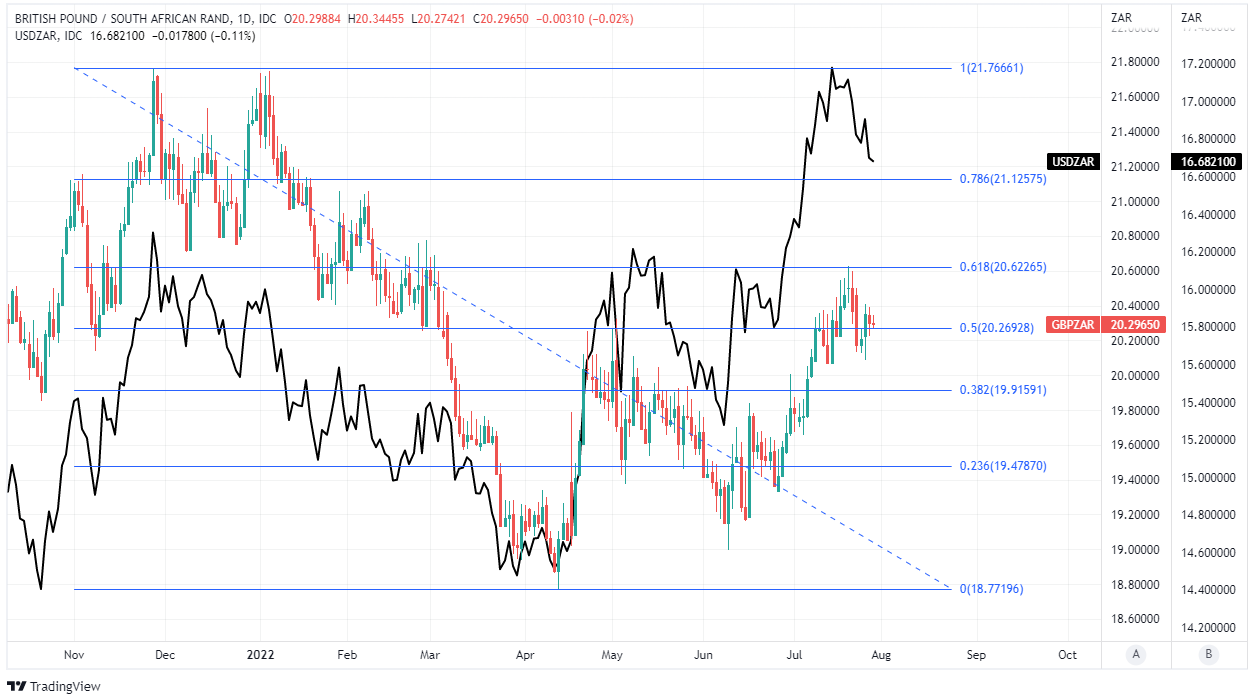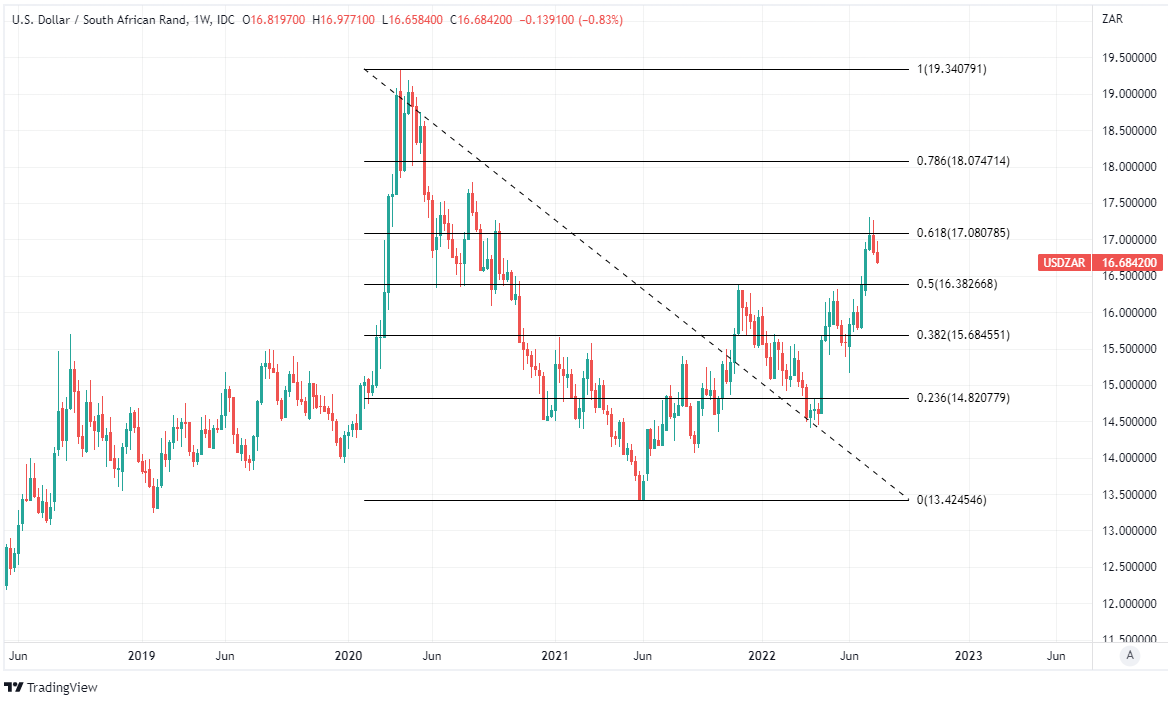South African Rand Rebound Containing Buoyant GBP/ZAR
- Written by: James Skinner
- GBP/ZAR buoyant but limited by USD/ZAR correction
- Chart resistance also frustrates path higher near 20.62
- SARB inflation stance & policy weighing on USD/ZAR
- Soft USD reinforces resistance at 17.08 for USD/ZAR

Image © Adobe Images
The Rand has rebounded from one year lows with the help of South African Reserve Bank (SARB) interest rate policy and a softening of the U.S. Dollar that have helped pull USD/ZAR down from a key resistance level at 17.0807 on the charts while containing a buoyant GBP/ZAR below 20.6226.
South Africa’s Rand fell to its lowest level in just more than a year earlier this month when a rampaging Dollar reached new millennium highs against some currencies but the latter has stalled and last week’s policy decision from the SARB has since helped the Rand back onto its feet.
“Last week’s 75bps policy rate hike by the SARB helped to push USDZAR initially towards the low-end of our target range (of 16.50-17.50). Overall, we still do not see a fundamental reason to alter our USDZAR range view,” writes Nimrod Mevorach, a strategist at Credit Suisse, in a Wednesday note.
“However, if we are wrong, and the USD resumes its decline, a break below the low-end of our USDZAR range will be on the cards. For example, based on recent correlations a decline in the BBDXY to the 1,260 area would be consistent with a drop in USDZAR to the 16.30-16.40 area,” Mevorach added.
The SARB cited recent increases in inflation expectations and the risk of further inflationary currency depreciation for this month’s larger-than-expected interest rate rise, which appeared to be the main catalyst for the downward correction in USD/ZAR now playing out.
 Above: GBP/ZAR at daily intervals with Fibonacci retracement of the 2022 downtrend indicating possible areas of technical resistance for Sterling and shown alongside USD/ZAR. Click image for closer inspection.
Above: GBP/ZAR at daily intervals with Fibonacci retracement of the 2022 downtrend indicating possible areas of technical resistance for Sterling and shown alongside USD/ZAR. Click image for closer inspection.
Prices of food, fuel and labour costs were also cited as reasons behind a sweeping uplift in many of the bank’s forecasts for inflation, which rose from 6.5% to 7.4% in June; taking it above the top end of the SARB’s three-to-six percent target band.
“The FRA curve did not fully factor in a 75bp hike at last week’s MPC meeting, and as a consequence the rand has had room to strengthen significantly as markets digested the information from the meeting,” says Annabel Bishop, chief economist at Investec.
“The MPC’s very hawkish tone is bolstering expectations that the SARB will not let SA’s interest rate differential with the US narrow severely,” she added.
The SARB said nothing in July about the extent to which its interest rate could yet rise in the months ahead but financial markets have continued to speculate that further increases are likely and in the meantime the U.S. Dollar has corrected lower from the highs reached earlier this month.
USD/ZAR’s decline from near 17.0807 and the Rand’s concurrent recovery has coincided with the turn lower by GBP/ZAR from the 61.8% Fibonacci retracement of its 2022 downtrend, which is also an important area of technical resistance for the Sterling exchange rate.
 Above: USD/ZAR at weekly intervals with Fibonacci retracement of the 2020 downtrend indicating possible areas of technical resistance. Click image for closer inspection.
Above: USD/ZAR at weekly intervals with Fibonacci retracement of the 2020 downtrend indicating possible areas of technical resistance. Click image for closer inspection.
But with little by way of major events scheduled in the South African economic calendar for the days ahead, Rand exchange rates will likely be driven most by international factors, which means the overall direction of the U.S. Dollar is likely to remain a key influence.
That leaves much about the short-term outlook for the Rand rested on the global market response to Wednesday’s Federal Reserve monetary policy decision, which saw U.S. interest rates lifted by a large 0.75% increment for a second consecutive occasion.
This took the Fed Funds rate range up to between 2.25% and 2.5%, which is the middle of the estimated neutral range, although the Dollar did not benefit from the decision and this was potentially due to the Fed’s more cautious stance about the outlook for interest rates.
“On our forecasts, we currently have USD/ZAR flat at 16.50, but with the assumption that the pair is likely to largely trade in a wide range of 16.00/17.50 amid a choppy external backdrop,” says Daria Parkhomenko, a strategist at RBC Capital Markets.
“Technically, our Chief Technical Strategist highlights that there is space for a correction in USD/ZAR, but pullbacks are likely to attract buying interest. USD/ZAR would have to close below a channel base at 15.6969 to nullify the broader uptrend,” Parkhomenko wrote in a recent research note.




